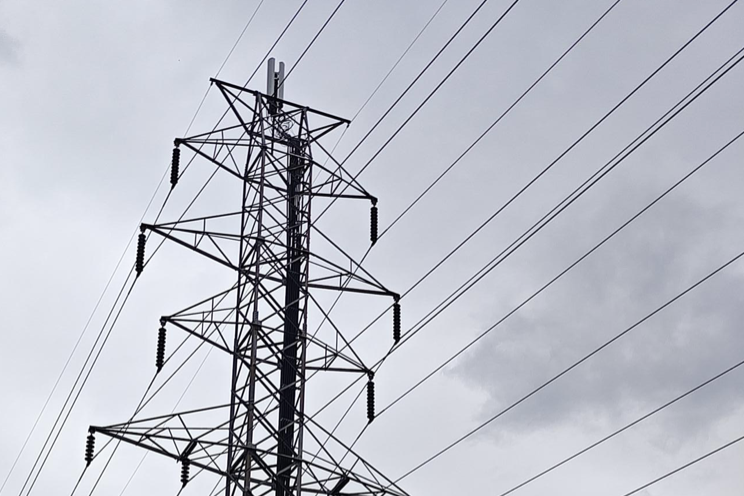FERC’s Landmark Transmission Orders: Paving the Way for a Reliable and Affordable Energy Future
Share this post:

On May 13, 2024, the Federal Energy Regulatory Commission (FERC) announced two transformative rulings—Orders 1920 and 1977—that promise to revolutionize the U.S. energy infrastructure. These orders mark a significant step toward addressing the challenges of an evolving electric sector and ensuring a robust, reliable, and affordable energy system.
Order 1920: Regional Transmission Planning and Cost Allocation Rule
Order 1920 is a milestone in regional transmission planning and cost allocation, aimed at overcoming regulatory hurdles that have long hindered the development of necessary transmission infrastructure.
This order mandates comprehensive long-term planning, requiring transmission providers to:
- Plan for the Future: Transmission providers must engage in forward-thinking regional planning for at least 20 years into the future. This planning must occur every five years and incorporate a wide range of factors, including laws and regulations, integrated resource plans, fuel costs, policy goals, and corporate commitments.
- Evaluate Key Benefits: Providers are now required to measure and utilize at least seven specific economic and reliability benefits in their planning processes:
- Avoided or deferred reliability transmission facilities and aging infrastructure replacement.
- Reduced loss of load probability or reserve planning margin.
- Production cost savings.
- Reduced transmission energy losses.
- Reduced congestion due to transmission outages.
- Mitigation of extreme weather events.
- Capacity cost benefits from reduced peak energy losses.
- Allocate Costs Fairly: Transmission providers must file one or more ex-ante methods for cost allocation and engage in a six-month consultation period with state entities regarding these methods.
- Consider Advanced Technologies: Providers are required to consider grid-enhancing technologies, such as dynamic line ratings, advanced power flow control devices, advanced conductors, and advanced transmission switching, although their use is not mandated.
- Federal Right of First Refusal: Transmission providers must adopt tariff provisions that offer a federal right of first refusal for developing any right-sized facility. The rule stops short of adopting a conditional federal right of first refusal due to joint ownership.
Commissioner Perspectives on Order 1920
While Order 1920 passed by a 2-1 vote, it was not without controversy. Commissioner Mark Christie dissented, arguing that the rule is unfair to consumers and deviates significantly from the initial proposal without adequate public review. He emphasized that the rule could lead to higher costs for consumers, labeling it as a pretext for implementing a broad policy agenda not sanctioned by Congress.
Order 1977: Backstop Siting Rule
Complementing Order 1920, Order 1977 addresses the siting of transmission infrastructure, a critical component in the timely development of new transmission projects. Key aspects of this order include:
- State and Federal Coordination: The rule maintains the existing one-year delay between state siting applications and the commencement of FERC’s pre-filing process, emphasizing the primary role of states in siting transmission infrastructure.
- Federal Authority: FERC retains the authority to issue permits for constructing or modifying transmission facilities in national interest corridors if state applications are denied.
- Environmental and Community Considerations: The order updates and clarifies environmental information requirements, including the impacts on air quality, noise, environmental justice communities, and tribal resources. Applicants must estimate emissions, noise impacts, and describe mitigation efforts.
- Notification Requirements: The rule establishes a notice limit near sensitive areas such as schools, hospitals, and homes to ensure communities are adequately informed.
Implications and the Path Forward
Together, Orders 1920 and 1977 represent a comprehensive approach to modernizing the U.S. transmission system. They aim to foster proactive, long-term planning, encourage the adoption of advanced technologies, ensure fair cost allocation, and streamline the siting process. By doing so, FERC is addressing the critical need for a reliable and affordable energy infrastructure capable of meeting future demands.
These orders are a significant step forward, but they also highlight the ongoing need for collaboration among stakeholders. As Chair Willie Phillips emphasized, these reforms are essential for fulfilling Congress’s directives and supporting the nation's energy goals.
The success of these orders will depend on the active participation of states, transmission providers, and other stakeholders. It is crucial for these entities to come together, engage in meaningful dialogue, and work collaboratively to implement the new rules effectively.
Conclusion
FERC’s Orders 1920 and 1977 mark a pivotal moment in the evolution of the U.S. energy system. By mandating comprehensive planning, considering a broad set of benefits, and ensuring fair cost allocation, these rules lay the foundation for a more resilient and efficient energy infrastructure. As we move forward, the collaboration and commitment of all stakeholders will be vital in realizing the full potential of these landmark reforms.
The future of our energy system depends on the steps we take today. With Orders 1920 and 1977, FERC has provided the framework—we must now work together to build the reliable, affordable, and sustainable energy future our nation needs.
written by:
Chad Singer
Director of Rates and Tariffs

